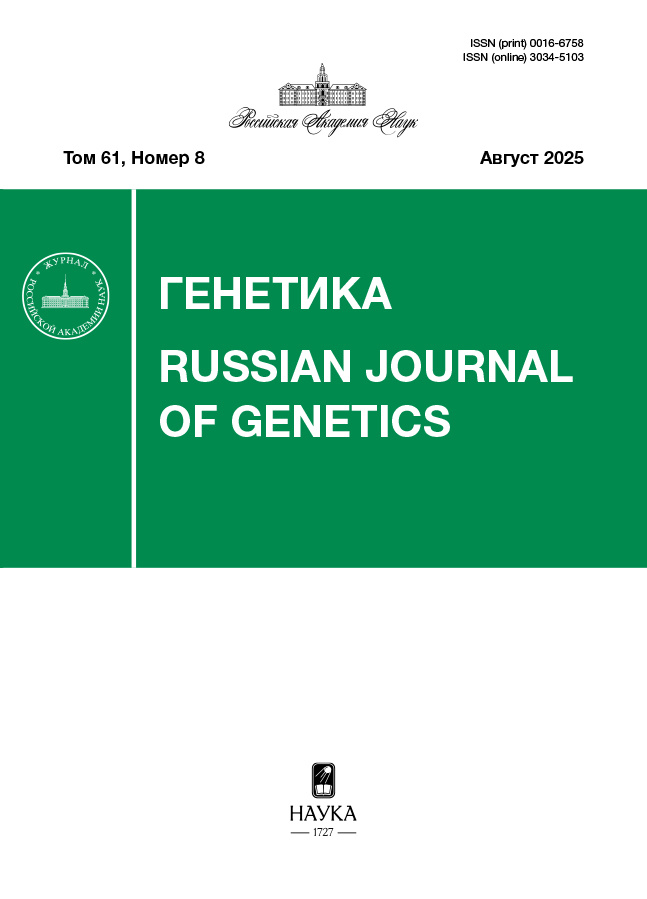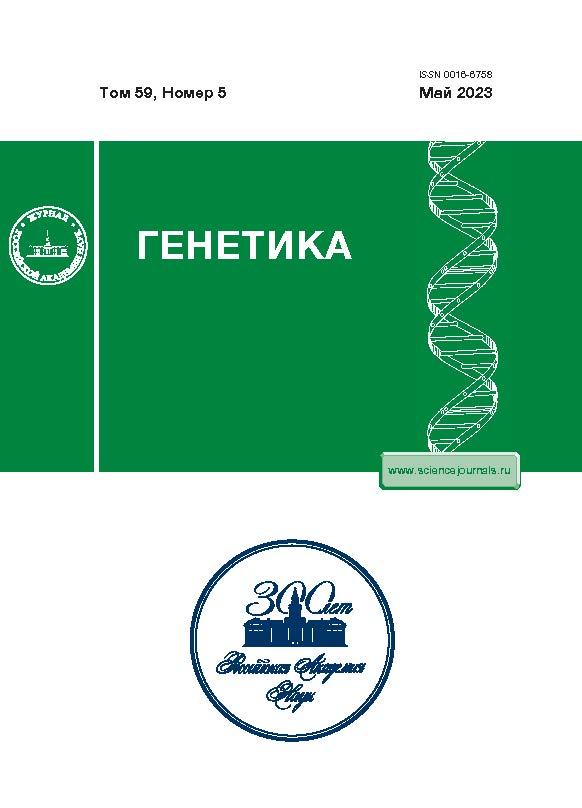Разработка тест-системы для ДНК-идентификации особей вида енотовидная собака
- Авторы: Гребенчук А.Е.1, Лукашкова О.Н.2, Котова С.А.2, Цыбовский И.С.3
-
Учреждения:
- Государственный комитет судебных экспертиз Республики Беларусь
- Научно-практический центр Государственного комитета судебных экспертиз Республики Беларусь
- Республиканское унитарное предприятие “БелЮрОбеспечение”
- Выпуск: Том 59, № 5 (2023)
- Страницы: 584-600
- Раздел: МАТЕМАТИЧЕСКИЕ МОДЕЛИ И МЕТОДЫ
- URL: https://rjpbr.com/0016-6758/article/view/666857
- DOI: https://doi.org/10.31857/S0016675823050065
- EDN: https://elibrary.ru/FNOVHT
- ID: 666857
Цитировать
Полный текст
Аннотация
По результатам исследования полиморфизма 39 микросателлитных (STR) локусов и трех локусов половой принадлежности, специфичных к различным видам семейства псовые, с целью ДНК-идентификации биологических образцов животных вида енотовидная собака (Nyctereutes procyonoides) предложена тест-система NPlex, включающая 14 аутосомных STRs и два половых локуса. Тест-система валидирована для решения экспертных задач по установлению принадлежности биологических следов, обнаруженных на местах правонарушений (следов крови и выделений, фрагментов мышечных или костных тканей, дермы и волос и т.п.), конкретной особи животного вида енотовидная собака, а также для установления биологического родства животных данного вида. Валидационные мероприятия проведены в соответствии с протоколом Scientific Working Group on DNA Analysis Methods.
Ключевые слова
Об авторах
А. Е. Гребенчук
Государственный комитет судебных экспертиз Республики Беларусь
Автор, ответственный за переписку.
Email: iamsanya94@mail.ru
Республика Беларусь, 220073, Минск
О. Н. Лукашкова
Научно-практический центр Государственного комитета судебных экспертизРеспублики Беларусь
Email: iamsanya94@mail.ru
Республика Беларусь, 220114, Минск
С. А. Котова
Научно-практический центр Государственного комитета судебных экспертизРеспублики Беларусь
Email: iamsanya94@mail.ru
Республика Беларусь, 220114, Минск
И. С. Цыбовский
Республиканское унитарное предприятие “БелЮрОбеспечение”
Email: iamsanya94@mail.ru
Республика Беларусь, 220069, Минск
Список литературы
- Yan S.Q., Li Y.M., Bai C.Y. et al. Development and characterization of polymorphic microsatellite markers for Chinese raccoon dog (Nyctereutes procyonoides procyonoides) // Genet. Mol. Res. 2013. V. 12. P. 6351–6355. https://doi.org/10.4238/2013.December.6.2
- Hong Y., Kim K.S., Lee H., Min M.S. Population genetic study of the raccoon dog (Nyctereutes procyonoides) in South Korea using newly developed 12 microsatellite markers // Genes & Genet. Systems. 2013. V. 88. № 1. P. 69–76. https://doi.org/10.1266/ggs.88.69
- Paulauskas A., Griciuvienė L., Juknelyte S. et al. Genetic diversity and population structure of raccoon dog (Nyctereutes procyonoides) in invaded areas // XMAT. 2014. P. 78. Antalya, Turkey. https://www.neobiota.eu/wp/wp-content/uploads/NEOBIOTA-2014-Abstract-Book.pdf
- Nørgaard L.S., Mikkelsen D.M.G., Elmeros M. et al. Population genomics of the raccoon dog (Nyctereutes procyonoides) in Denmark: Insights into invasion history and population development // Biol. Invasions. 2017. V. 19. № 5. P. 1637–1652. https://doi.org/10.1007/s10530-017-1385-5
- Oh S.Y., Kim S.A., Kim J.Y. et al. Detection of antibodies against the rabies virus in Korean raccoon dogs (Nyctereutes procyonoides koreensis) // J. Zoo and Wildlife Med. 2012. V. 43. № 1. P. 174–176. https://doi.org/10.1638/2011-0063.1
- Kido N., Itabashi M., Takahashi M., Futami M. Epidemiology of sarcoptic mange in free-ranging raccoon dogs (Nyctereutes procyonoides) in Yokohama // Jap. Veter. Parasitology. 2013. V. 191. № 1–2. P. 102–107. https://doi.org/10.1016/j.vetpar.2012.07.026
- Bagrade G., Deksne G., Ozoliņa Z. et al. Echinococcus multilocularis in foxes and raccoon dogs: an increasing concern for Baltic countries // Parasites & Vectors. 2016. V. 9. № 1. P. 1–9. https://doi.org/10.1186/s13071-016-1891-9
- Griciuvienė L., Paulauskas A., Radzijevskaja J. et al. Impact of anthropogenic pressure on the formation of population structure and genetic diversity of raccoon dog Nyctereutes procyonoides // Curr. Zool. 2016. V. 62. № 5. P. 413–420. https://doi.org/10.1093/cz/zow038
- Kauhala K., Kowalczyk R. Invasion of the raccoon dog Nyctereutes procyonoides in Europe: history of colonization, features behind its success, and threats to native fauna // Curr. Zool. 2011. V. 57. № 5. P. 584–598. https://doi.org/10.1093/czoolo/57.5.584
- Lever C. Naturalized Mammals of the World. London: Longman, 1985. Available from: https://www.cabi.org/isc/abstract/19860537058
- Deinet S., Ieronymidou C., McRae L. et al. Wildlife comeback in Europe: The recovery of selected mammal and bird species // Final Rep. to Rewilding Europe by ZSL, BirdLife International and the European Bird Census Council. London, UK, 2013. Available from: https://rewildingeurope.com/wp-content/uploads/20-13/11/Wildlife-Comeback-in-Europe-the-recovery-of-selected-mammal-and-bird-species.pdf
- Sillero-Zubiri C., Hoffmann M., Macdonald D.W. Canids: Foxes, wolves, jackals, and dogs // Status Survey and Conservation Action Plan. 2004. V. 95. Gland, Switzerland: IUCN, available from: https://www.carnivoreconservation.org/files/actionplans/canids.pdf
- Boom R.C.J.A., Sol C.J., Salimans M.M. et al. Rapid and simple method for purification of nucleic acids // J. Clin. Microbiol. 1990. V. 28. № 3. P. 495–503. https://doi.org/10.1128/jcm.28.3.495-503.1990
- Benson D.A., Karsch-Mizrachi I., Lipman D.J. et al. GenBank // Nucl. Acids Res. 2005. V. 34. P. D16–D20. https://doi.org/10.1093/nar/gkj157
- Hall T., Biosciences I., Carlsbad C. BioEdit: An important software for molecular biology // GERF Bull. Biosci. 2011. V. 2. № 1. P. 60–61. https://www.researchgate.net/profile/Ahmed-Alzohairy/publication/2585-65830_BioEdit_An_important_software_for_molecular_biology/links/0deec528a87d3f2ee0000000/BioEdit-An-important-software-for-molecular-biology.pdf
- Peakall R.O.D., Smouse P.E. GENALEX 6: Genetic analysis in Excel. Population genetic software for teaching and research // Mol. Ecol. Notes. 2006. V. 6. № 1. P. 288–295. https://doi.org/10.1093/bioinformatics/bts460
- Excoffier L., Lischer H. An integrated software package for population genetics data analysis // Comput. and Mol. Popul. Genet. Lab (CMPG). 2006. Berne, Switzerland: Institute Zool., Univ. Berne, PMID: 19325852.
- Van Oosterhout C., Hutchinson W.F., Wills D.P., Shipley P. MICRO-CHECKER: Software for identifying and correcting genotyping errors in microsatellite data // Mol. Ecol. Notes. 2004. V. 4. № 3. P. 535–538. https://doi.org/10.1111/j.1471-8286.2004.00684.x
- Marshall T.C., Slate J.B.K.E., Kruuk L.E.B., Pemberton J.M. Statistical confidence for likelihood – based paternity inference in natural populations // Mol. Ecol. 1998. V. 7. № 5. P. 639–655. https://doi.org/10.1046/j.1365-294x.1998.00374.x
- Pritchard J.K., Stephens M., Donnelly P. Inference of population structure using multilocus genotype data // Genetics. 2000. V. 155. № 2. P. 945–959. https://doi.org/10.1534/genetics.116.195164
- Earl D.A., VonHoldt B.M. STRUCTURE HARVESTER: A website and program for visualizing STRUCTURE output and implementing the Evanno method // Conservation Genet. Res. 2012. V. 4. № 2. P. 359–361. https://doi.org/10.1007/s12686-011-9548-7
- Lischer H.E., Excoffier L. PGDSpider: An automated data conversion tool for connecting population genetics and genomics programs // Bioinformatics. 2012. V. 28. № 2. P. 298–299. https://doi.org/10.1093/bioinformatics/btr642
- DeNise S., Johnston E., Halverson J. et al. Power of exclusion for parentage verification and probability of match for identity in American kennel club breeds using 17 canine microsatellite markers // Animal Genet. 2004. V. 35. № 1. P. 14–17. https://doi.org/10.1046/j.1365-2052.2003.01074.x
- Caniglia R., Fabbri E., Greco C. et al. Forensic DNA against wildlife poaching: Identification of a serial wolf killing in Italy // Forensic Sci. Int. Genet. 2010. V. 4. № 5. P. 334–338. https://doi.org/10.1016/j.fsigen.2009.10.012
- Dayton M., Koskinen M.T., Tom B.K. et al. Developmental validation of short tandem repeat reagent kit for forensic DNA profiling of canine biological material // Croatian Med. J. 2009. V. 50. № 3. P. 268–285. https://doi.org/10.3325/cmj.2009.50.268
- Whiteside H.M., Dawson D.A., Soulsbury C.D., Harris S. Mother knows best: Dominant females determine offspring dispersal in red foxes (Vulpes vulpes) // PLoS One. 2011. V. 6. № 7. P. e22145. https://doi.org/10.1371/journal.pone.0022145
- Seddon J.M. Canid-specific primers for molecular sexing using tissue or non-invasive samples // Conservation Genet. 2005. V. 6. № 1. P. 147–149. https://doi.org/10.1007/s10592-004-7734-9
- Botstein D., White R.L., Skolnick M., Davis R.W. Construction of a genetic linkage map in man using restriction fragment length polymorphisms // Am. J. Hum. Genet. 1980. V. 32. № 3. P. 314. PMID: 6247908.
Дополнительные файлы















